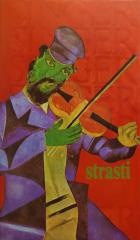
Ploveće ostrvo
A science fiction novel by Jules Verne that depicts the adventures of musicians from a French quartet who accidentally find themselves on a huge, artificial island powered by motors - a floating continent called Standard Island.
This technological wonderland was created for wealthy Americans seeking luxury, isolation, and control over their environment, navigating the Pacific Ocean to their desired climate.
At first glance, Standard Island appears to be a utopia—it has its own rules, wealth, infrastructure, and self-sustaining system. But soon internal conflicts between the island’s two main social factions—Milliard City and Centrapolis—come to light. These factions, differing in their interests and visions of the island’s future, engage in increasingly fierce conflicts that threaten to destroy their artificial utopia.
Through the characters of a musical quartet and the island’s diverse inhabitants, Verne explores themes of greed, technological progress, elitism, and moral decay. The novel is both a critique of social differences and a warning about the dangers of isolation and overreliance on technology.
The book consists of two volumes.
Jedan višetomni primjerak je u ponudi.

- Slight damage to the cover

- Slight damage to the cover





